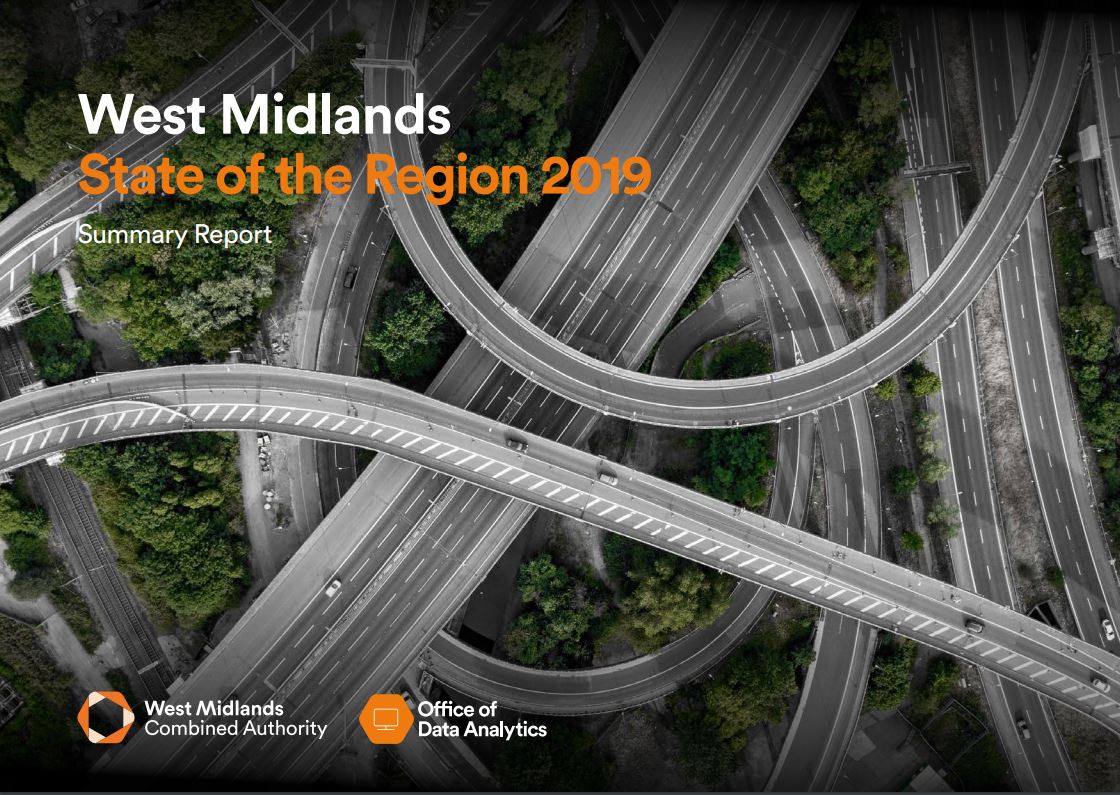The report, unveiled at the WMCA annual general meeting on Friday June 28, highlights increases in job creation, qualification levels, employment and business growth – all of which are rising faster than the UK average.
Using the latest verified data to provide a “stocktake” on the region, the report focusses on the geography of the three Local Enterprise Partnership areas under the WMCA – the Black Country LEP, Greater Birmingham and Solihull LEP and Coventry and Warwickshire LEP.
Andy Street, the Mayor of the West Midlands, said:
“For decades, the West Midlands had been falling behind the likes of Manchester and Liverpool when it came to investment and growth. Now however, thanks to a collaborative approach through the WMCA, we have more than bucked that trend.
“As the State of the Region report shows, we are outpacing the growth of the rest of the UK in many of the key stats that matter – job creation, employment, business growth and qualification levels.
“There are of course areas still to be improved however. For instance, we know we need to help more people into work, and increase the number of adults undertaking physical activity.
“But as a marker of progress so far, this report underlines the steps forward we are making together as a region.”
The Mayor has previously spoken about an “economic renaissance” in the West Midlands, and the report shows the region is growing much faster than elsewhere in the UK outside London.
On the economy, the report shows that in 2017, the West Midlands GVA (gross value added, a measure of the value of goods and services in an area) – hit an eight-year high of £99bn, growing by £3.5bn between 2016 and 2017 and matching UK growth at 3.6%. In the same period, GVA per hour grew by 3.1%, a significant rise compared to UK average growth of 2.5%.
Record numbers of jobs are being created in the region, with job growth between 2016 and 2017 standing at 3.1% - three times the rate across England in the same period (1.3%). And while 71.7% of the West Midlands population are employed against a national average of 75%, employment is growing faster than the rest of the UK - with 19,600 more people getting jobs between 2017 and 2018 - a 0.7% rise, compared to a 0.3% rise nationally.
The number of people with high-level qualifications (NVQ Level 4) is rising faster than the rest of the UK too. Between 2017 and 2018, 32.1% of the West Midlands population held an NVQ level 4 qualification - an increase of 3.4% on the previous year, compared to a national increase of 2.3%.
Similarly, the number of people with no qualifications - around 11% of the population, or 283,700 people – is decreasing faster than the UK average (-2.5% compared to +0.2% in the UK for 2017-18).
Youth unemployment is also decreasing – with 8.7% of those aged 16 to 24 counted as ‘unemployed’ in 2018, down from 9.7% in 2017.
Cllr Ian Brookfield, leader of the City of Wolverhampton Council and portfolio holder for economy and innovation at the WMCA, said:
“This report sets out the positive progress being made across the region – with encouraging rises in job creation, tourism, trade and housebuilding.
“It underlines the West Midlands’ strengths and shows that, where we do have room to improve, we are improving faster than the national average.
“There are also a number of challenges for us to consider – but by working together as part of the WMCA, I’m confident we will see even better progress by the time we publish the State of the Region report in 2020.”
The report shows 14,500 new homes were built in the WMCA area in 2018 – up from 11,500 in 2017, and helping progress against the authority’s aim to build 215,000 new homes in the region by 2031.
In terms of trade, the report claims “the West Midlands is the export capital of the UK” – and shows the area exported £17.8bn worth of goods across the world in 2017, £11.1bn of which went outside the EU - more than any other area outside London. The WMCA area also has a substantial trade surplus with China (+£1.02bn) and the largest trade surplus of all UK areas with the USA (+£2.7bn).
The number of active businesses in the West Midlands is growing faster than the UK rate too – with 3.6% more active businesses between 2016 and 2017 compared to 3.3% for the UK.
Meanwhile, tourism in the West Midlands is also on the rise: the WMCA area had 131 million visitors in 2018 – an increase of 3.4m (2.6%) on the previous year, with the majority (3.1m) as day visitors. Visits to parks and museums have increased by 3.4%, and museums and galleries by 1.4% compared to 2017.
The State of the Region Report 2019 can be viewed online here.
Article credit: West Midlands Combined Authority
